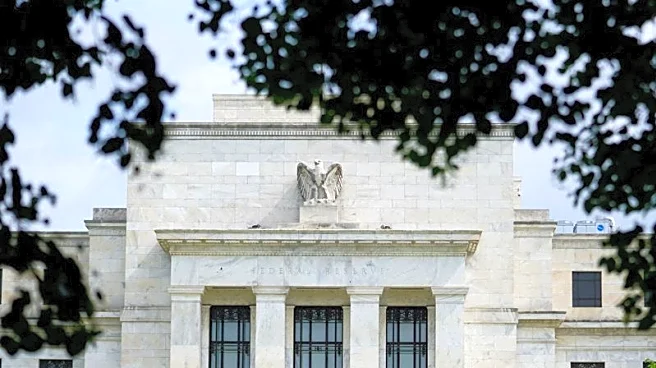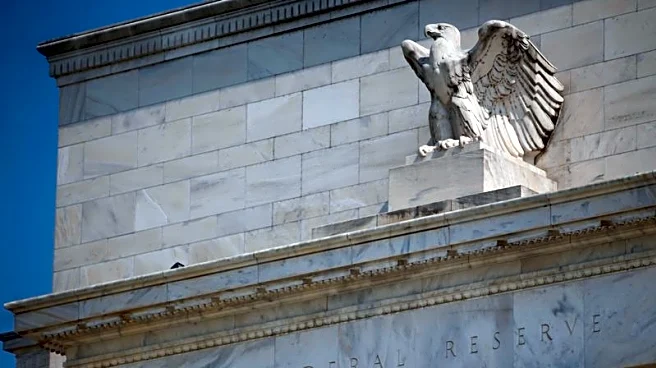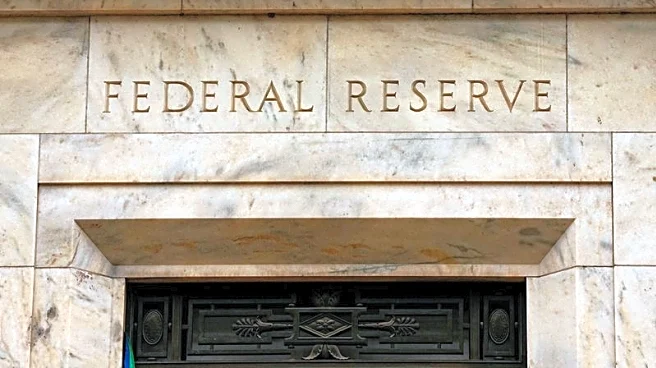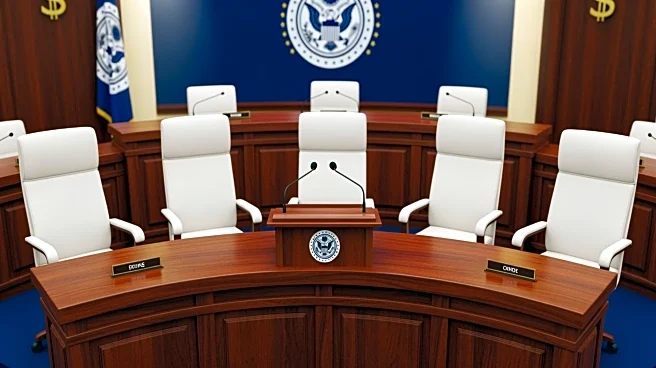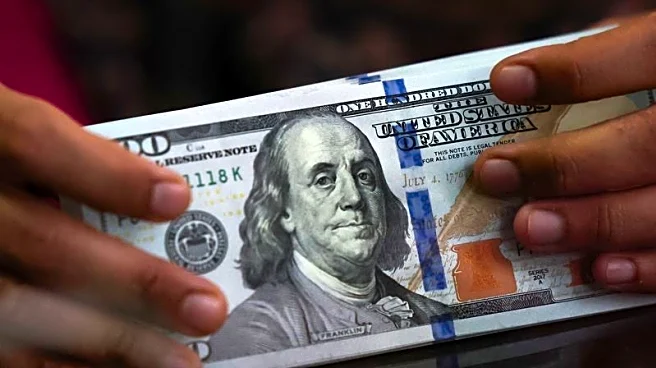By Michael S. Derby
(Reuters) -As Wall Street's expectations have rapidly shifted toward an imminent end to the Federal Reserve's effort to shrink its bond holdings, some analysts also anticipate a return
to balance sheet expansion in relatively short order.
A wide range of economists in recent days has called for the Fed to announce an end to its quantitative tightening (QT) at the conclusion of its two-day policy meeting on Wednesday. The U.S. central bank's policy-setting Federal Open Market Committee is also widely expected to lower its benchmark interest rate by a quarter of a percentage point to the 3.75%-4.00% range at that meeting.
An unexpected and sometimes volatile rise in money market rates, including an upward drift in the federal funds rate, the Fed's policy rate, has motivated analysts to call for the central bank to end the shrinkage of its bond holdings. Also motivating the forecast shift: Modest but regular usage of the Fed's Standing Repo Facility liquidity tool, which further signals a rising tightness in what had been flush money market conditions.
Collectively, these indicators suggest the Fed has taken enough money out of the financial system through the drawdown of its bond holdings. If central bankers want to retain firm control over the federal funds rate, their chief lever to influence the economy, the drawdown window has closed, many economists now believe.
"We now expect the FOMC to announce an end to QT next week," Deutsche Bank strategists said, given money market developments and Fed officials' desire to make this chapter of balance sheet management smooth. Derek Tang, an economist and co-founder of research firm LH Meyer, said "it's not a foregone conclusion that they stop at this particular meeting, but I wouldn't be too surprised if they did either."
U.S. central bank officials have given cursory guidance about the outlook for QT. Fed Chair Jerome Powell said in a recent speech that the process could end in coming months, while noting a need to be "nimble" in the management of the Fed's holdings. Other central bankers, including Dallas Fed President Lorie Logan, have noted that liquidity in markets remains ample, while Fed Vice Chair for Supervision Michelle Bowman has pushed for an aggressive drawdown of holdings.
Shuttering the QT program may generate a dissenting vote from Bowman given her balance sheet preferences, Standard Chartered economists said.
PROSPECT OF TEMPORARY MARKET INTERVENTIONS
After more than doubling the size of its balance sheet with aggressive purchases of Treasury bonds and mortgage-backed securities as a stimulus tool during the COVID-19 pandemic, the Fed has reduced the size of its holdings from a peak of about $9 trillion in 2022 to the current level of $6.6 trillion. The Fed has carried out the drawdown by allowing Treasuries and MBS to expire, although issues in the housing market have put the burden of QT on government bonds.
The Fed has been taking out excessive liquidity to reach a point where the financial system has enough cash in it for the federal funds rate to trade where policymakers want it to, while allowing for normal money market volatility. The trick for the Fed is that there are no firm metrics to predict when those conditions will arrive. The last time the central bank did QT it inadvertently overshot its goal in September 2019, which forced it back into the business of adding money into the market.
Fed officials have hoped that the Standing Repo Facility, which allows bond holdings to be converted quickly into cash, would act as a shock absorber to deal with any looming liquidity issues, in turn giving them more QT runway. Officials have also reserved the right to intervene with traditional open market operations - temporary and permanent bond purchases - to manage liquidity.
The new view on QT has an additional wrinkle, as some forecasters believe the Fed will need to start adding money back into the financial system. QT is moving at a negligible pace even now, so announcing its end this week or very soon may not steady money markets to the degree needed, some analysts said.
J.P. Morgan analysts told clients that after ending QT this week, Fed officials should employ temporary market interventions "immediately," as well as shift the Standing Repo Facility borrowing rate down to make its usage more attractive.
Beyond that, the investment bank says the Fed will have to start expanding its holdings with purchases in the first quarter of 2026, as part of the effort to keep money markets calm. Concurring with that assessment, Evercore ISI said in a note "we think the Fed will need to pivot to net purchases for organic growth purposes much sooner than it had planned or consensus expects, with around $35 billion a month of net Treasury buys starting at some point" in the first quarter.
Given the challenge of getting MBS off the Fed's books, most expect that drawdown to be allowed to proceed, which means Treasury bonds will be the focus of the balance sheet management. Deutsche Bank expects any future Fed purchases, which it also sees occurring early next year, to concentrate on Treasury bills.
While it's not the dominant view, some analysts even think the Fed could extend QT if it resorted to temporary operations.
"An occasional temporary open market operation that adds reserves will ultimately allow the Fed to get much smaller than would be possible if the Fed just continues to allow reserve balances to swing around," said Bill Nelson, a former Fed staffer who is now chief economist at the Bank Policy Institute, a lobbying group. The Treasury debt auction settlement on Friday will put big demands on market liquidity, and that "would be a good time to start."
(Reporting by Michael S. Derby; Editing by Paul Simao)
